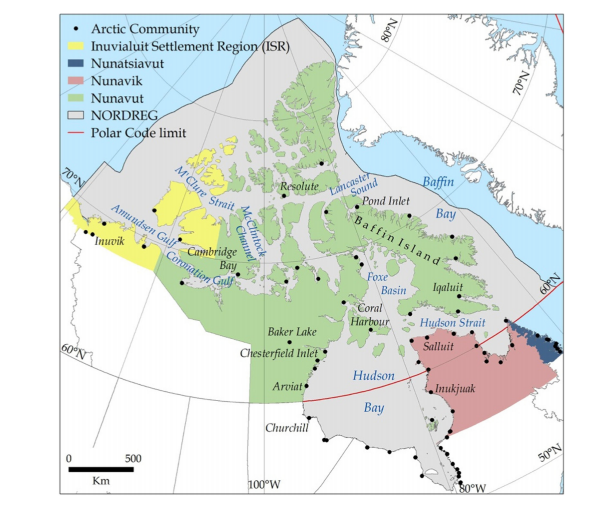Abstract
In 2018, The International Maritime Organization, officially proposed consideration of a ban on heavy fuel oil (HFO) use by ships in the Arctic, because of the widely accepted understanding that HFO presents a threat to the marine environment. There is currently a lack of understanding of the scale and scope of HFO use by ships operating in Canadian Arctic waters, thus it is difficult to comprehensively evaluate the effect that such a ban may have in mitigating risk from HFO use. In this study, we conducted a spatial analysis of HFO use among ships operating in Canadian Arctic waters between 2010 and 2018. Our findings show that approximately 37% of the total number of ships that have travelled through the Canadian Arctic between 2010 and 2018 use HFO, and nearly all of these ships fall within three vessel categories: general cargo, bulk carriers, and tanker ships. In addition, HFO-fueled ships made up approximately 45% of the total distance (kilometres) travelled by all vessels between 2010 and 2018. The data also show that the majority of HFO use occurs in certain geographic areas, such as Baffin Bay near Pond Inlet and the Hudson Strait.
Introduction
The International Maritime Organization (IMO), at the 72nd session of the Marine Environment Protection Committee, directed the sixth session of the Pollution Prevention and Response Sub-committee to develop a ban on heavy fuel oil (HFO) use by ships in the Arctic, on the basis of an assessment of the impacts and on an appropriate timescale. It is vital that research on the extent of use and on the impacts of HFO be conducted so that international decision-making can make specific policy decisions and directives that are indeed evidence based. Some research has already been conducted about HFO use in the Arctic (Det Norske Veritas 2011; Comer et al. 2016) including a few studies that focused directly on the Canadian Arctic (Vard 2016; DeCola and Robertson 2018). The World Wildlife Fund Canada has commissioned and conducted studies that examine the potential impact of HFO use in Canadian Arctic waters and the potential costs of an HFO ban on Canadian Arctic communities that rely on cargo ships for their annual resupply (Vard 2016; DeCola and Robertson 2018). In addition, in December 2019, Transport Canada released a report assessing the benefits and impacts associated with a proposed ban on HFO in the Canadian Arctic (Transport Canada 2019). While it is widely accepted that HFO presents a threat to the marine environment, there is a lack of understanding of the scale and scope of HFO use by ships operating in Arctic waters; therefore, it is difficult to discern the extent to which the proposed ban may affect ship operations in the region. However, there is an overall significant lack of scientific understanding of the specific effects of HFO in Arctic waters and, importantly, there are significant knowledge gaps on the potential implications of an HFO ban for ship operators and local communities in Canada.
In this study, we focus solely on understanding the scale and scope HFO use among ships operating in Canadian Arctic waters and do not comment on the potential implications of the proposed HFO ban. To establish the scale and scope of HFO use among ships operating in Canadian Arctic waters we utilized a variety of research methods to develop a database of fuel use by ships that operated in Canadian Arctic waters between 2010 and 2018. The database was then used to determine the type and size of ships that are most likely using HFO and to determine where (spatially) these ships are travelling within the Canadian Arctic. Before presenting the study methods and results, we provide an overview of HFO use and its potential impacts on the marine environment, briefly touch on policy discussions regarding HFO use in the Arctic and Canadian Arctic specifically, and reflect on the potential impacts a ban could have on Canadian Arctic communities. Further, we consider previous research that has examined HFO in the Arctic to provide the context for our study and methods.


